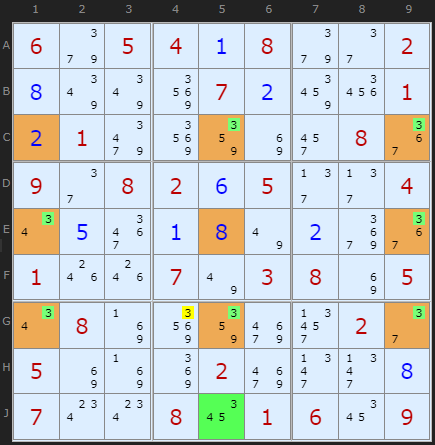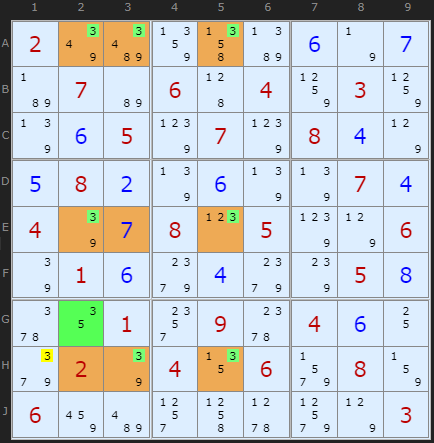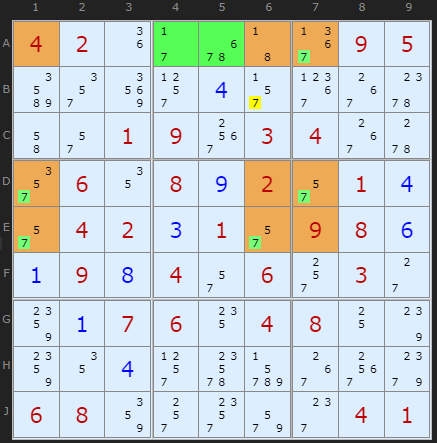| Main Page - Back |
|
From SudokuWiki.org, the puzzle solver's site |

Finned Swordfish

Now, that said it is not a perfect Swordfish because the centre column 5 contains an extra 3 in J5, which ruins the whole formation. However, the Finned Rule says we can ignore it if we confine the eliminations to the box where the fin is, namely box 8. There is one 3 that we can remove, on G4.

Two examples now of the Sashimi variety of Finned SwordFishies.
Figure two is a little more bunched up but we have a 2-2-3 formation based on eliminations in rows. The exceptional candidate 3 which blocks this from being a perfect SwordFish is on G2. But we can invoke the Sashimi observation to ignore the lack of a 3 on H2, one of the corners of the SwordFish. Eliminating in row H and box 7 we an remove the 3 from H1.

The second example illustrates that the Sashimi cell doesn't have to be a clue or a solved cell. The brown cell A6 simply lacks the candidate 7, which had been removed using previous logical strategies. The double fin is in green, A4 and A5. This is quite a restricted SwordFish, which in row orientation is a 1-2-2 formation - but it works!
(Turn Grouped X-Cycles off)
Here is a lovely Sudoku made by Klaus Brenner (April 2012).
Try loading this one. It contains
Try loading this one. It contains
- 1 X-Wing on 6
- 1 Finned-X-Wing on 6
- 1 Swordfish on 9
- 1 Finned Swordfish on 6, brown cell H9 never contained a 6
- 1 Finned Sashimi Swordfish on 6, brown cell G8 never contained a 6